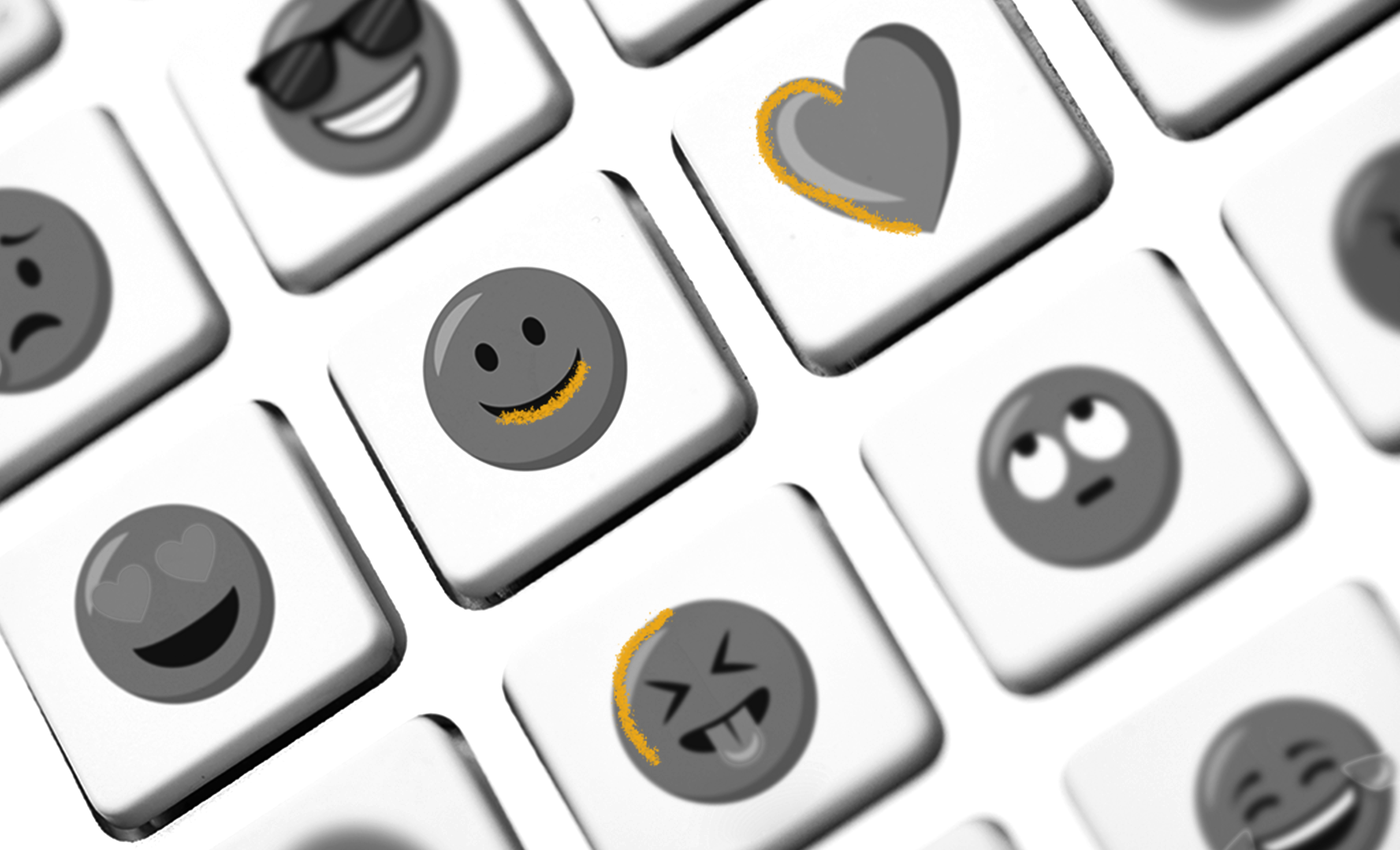The ancestors of emojis were emoticons, which got their start in 1990s chat rooms and were created using existing characters, such as :-), which was intended to depict a smiley face. The first emojis were created in 1999 by a Japanese artist named Shigetaka Kurita who was working on the development team for “i-mode,” an early mobile internet platform from DOCOMO. Kurita created an original set of 176 emojis. Rival companies copied DOCOMO’s idea and emojis quickly gained popularity throughout Japan. When mobile computing took off outside Japan in the mid-2000s, companies like Apple began to incorporate emojis on their own platforms. In 2007, Google employees Kat Momoi, Mark Davis, and Markus Scherer petitioned the Unicode Consortium, a non-profit group that sets text standards across computers, to officially recognize and regulate emojis. In 2009, Apple engineers Yasuo Kida and Peter Edberg submitted an additional proposal to adopt 625 new emoji characters into the Unicode Standard. Their proposal was accepted in 2010 and made emojis universally accessible for the first time. In 2011, Apple added an official emoji keyboard on iOS and Android followed suit just 2 years later. Previously, emojis were only accessible via other apps, but by adding them directly to a phone’s keyboard, Apple and Android made them easy to access and they quickly became massively popular. Each year, the Unicode Consortium adds more emojis to its approved list, but the process can take up to two years from conception to acceptance and adoption. In 2015, the option to change the skin tone on human emojis was introduced. Same-sex couple emojis were also introduced along with a few others intended to be more inclusive. Since then, each emoji update has included more options for diversity and representation, such as a female surfer emoji, a female doctor emoji, and various emojis showing people wearing turbans and hijabs. Diversity in emojis is important not only for representing different life experiences, but also because they have become a way of communicating across languages and cultures. Because images are often universally understandable, emojis offer a way to bridge the gap between disparate languages. In fact, emojis have transformed into a full-fledged digital language with a profound effect on the way we communicate via messaging.

Your go-to guide for weird history facts
Subscribe to the FREE daily email that makes learning about history fun.


